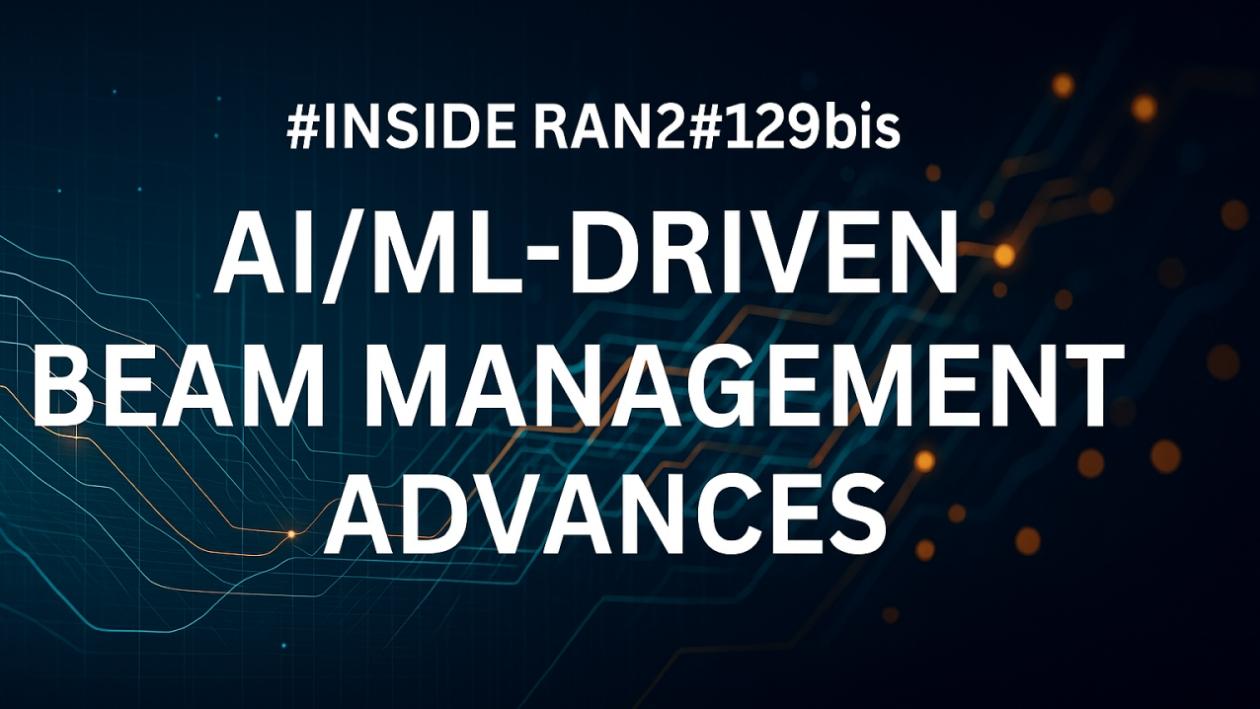The 3GPP RAN2#129bis meeting marked a turning point in standardizing AI/ML-driven UE behavior. As 5G evolves into an adaptive system, delegates are now shaping the signaling and configuration logic needed to support intelligent, context-aware decision-making at the UE.
Under agenda item 8.1.2.2 (LCM for UE-Sided Model for Beam Management), 28 companies submitted 232 proposals across 29 TDocs. Leveraging AI and the latest version of 3GPP series 38 TRs, Wispro analyzed each proposal to uncover the dominant themes, technical trade-offs, and upcoming challenges for Stage-3 standardization.
A Converging Vision: 76.72% Positive Sentiment
The tone of the meeting was notably collaborative. 178 proposals (76.72%) were positive, 46 (19.83%) neutral, and only 8 (3.45%) negative. This consensus signals that the industry is aligned on AI/ML’s strategic direction and is now focused on implementing viable signaling mechanisms.
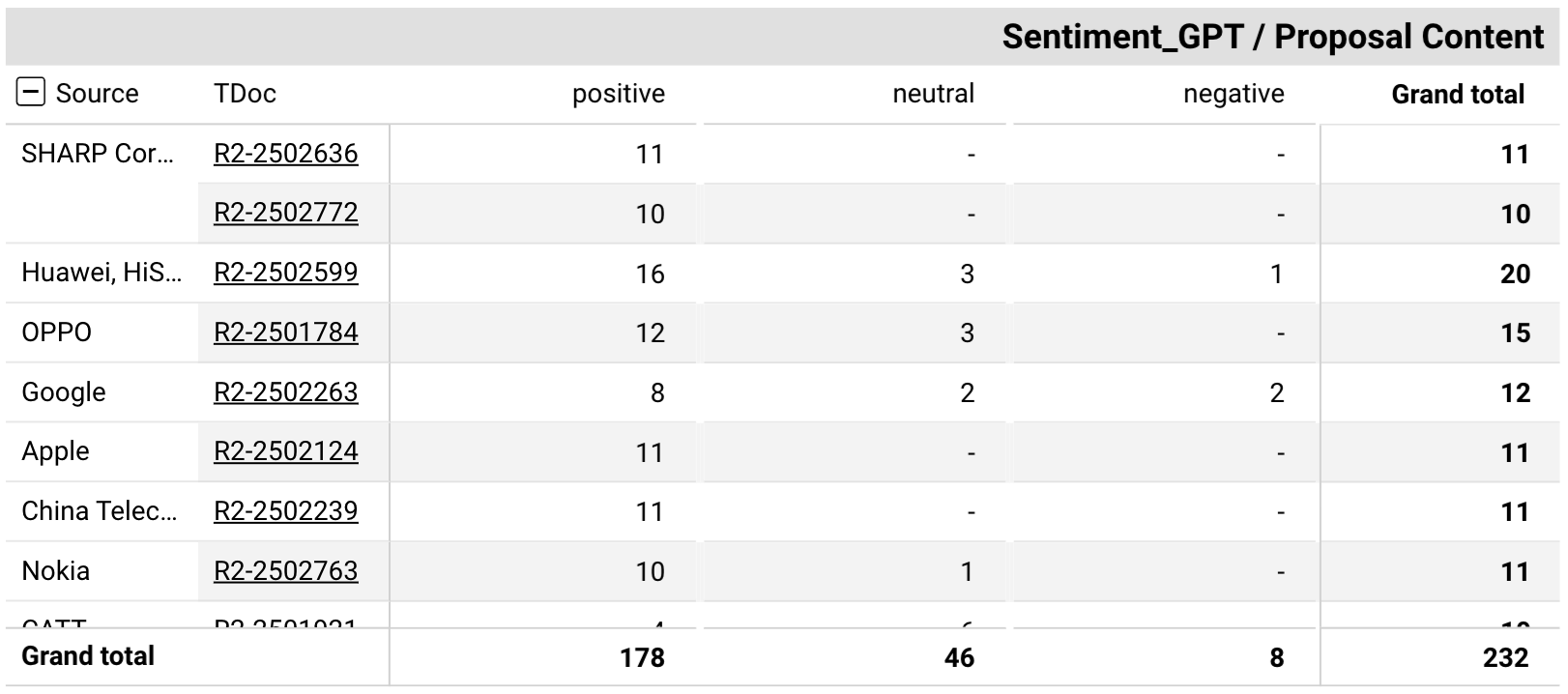
Contributors having more than 10 proposals forRAN2#129bis' agenda item 8.1.2.2
Leading contributors included SHARP Corporation (21 proposals across R2-2502636 and R2-2502772), Huawei and HiSilicon (20 proposals from R2-2502599), and OPPO (15 proposals in R2-2501784). A standout multi-vendor effort, R2-2501783 — supported by 14 companies, including OPPO, Lenovo, and Samsung — proposed a three-step RRC process:
- UE receives inference parameters via OtherConfig,
- UE reports applicability in RRCReconfigurationComplete,
- UE updates applicability through UEAssistanceInformation (UAI).
This proposal reflects growing industry consensus on how inference-related parameters should integrate into signaling flows.
Proposals focus on 5 major technical categories
As shown below, our research recognized 5 major technical categories and 13 sub-categories from the 232 submitted proposals.
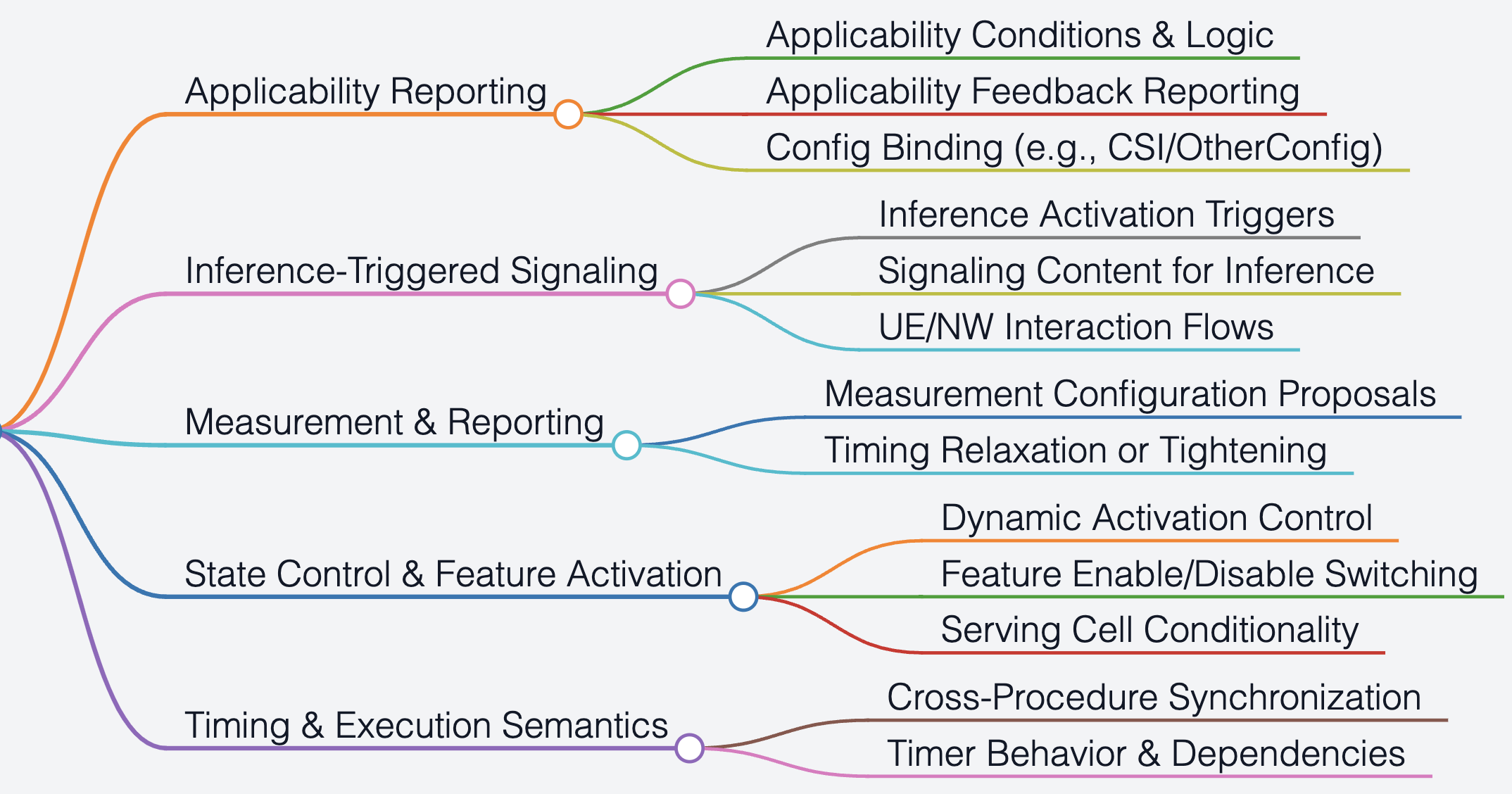
Technical categories recognized from the 232 submitted proposals
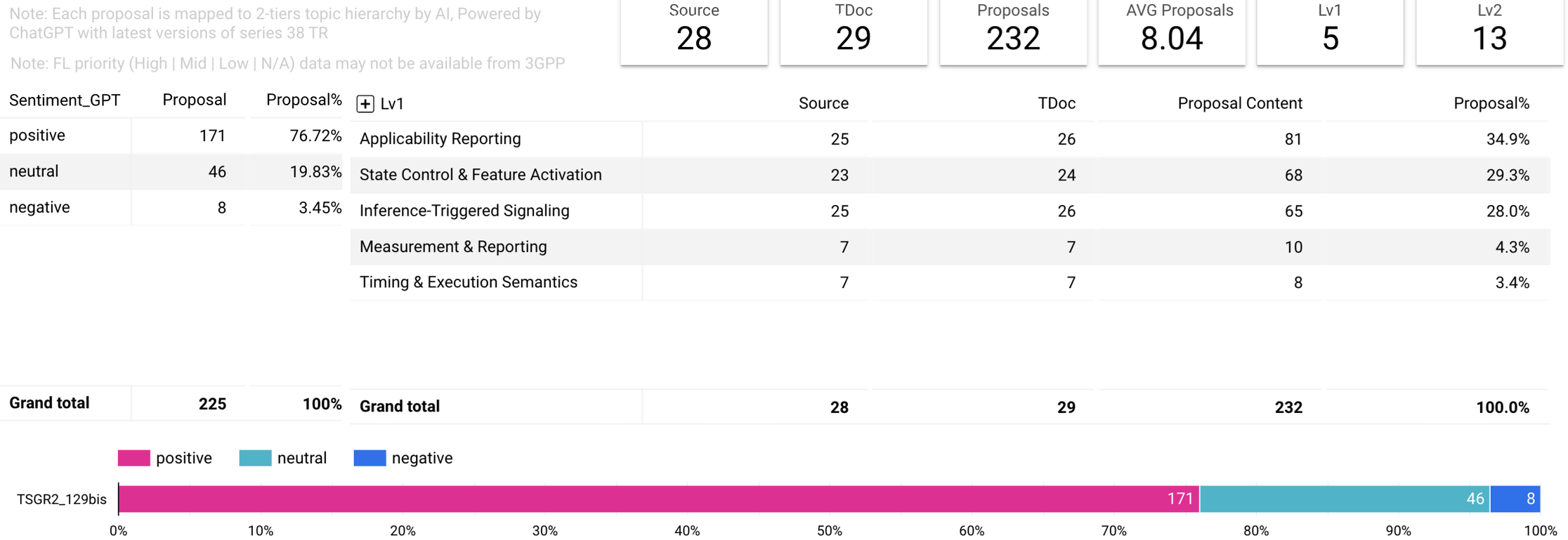
Landscaping for proposal distribution over Lv1 technical categories of RAN2#129bis agenda item 8.1.2.2
Applicability and Inference Signaling Take the Lead
Two categories dominated the proposal landscape, comprising 62.9% of all submissions:
- Applicability Reporting: 81 proposals (34.9%)
- Inference-Triggered Signaling: 65 proposals (28.0%)
These areas define how a UE communicates what it supports and when it should act — foundational to AI/ML behavior.

Proposal distribution for Lv1 = (Applicability Reporting or Inference-Triggered Signaling)
Within Applicability Reporting, proposals split into:
- Config Binding: 36 proposals mapped inference applicability to CSI-ReportConfig or OtherConfig.
- Conditions & Logic: 35 proposals defined how UEs determine when features are applicable.
For Inference-Triggered Signaling, 43 proposals focused on Signaling Content for Inference, specifying what parameters (e.g., Set A/B beams, inference results) are signaled between UE and network.
The Cause Conundrum: Should the UE Explain Itself?
A notable split in Applicability Reporting emerged: should UEs report the reason why a feature is inapplicable?
- In Favor (13 proposals): Xiaomi (R2-2501940, Proposal 6) and Apple (R2-2502124, Proposal 11) propose that UEs report causes like “model unavailable” or “Due to NW-side additional condition.” This diagnostic transparency enables adaptive reconfiguration, such as adjusting Set A/B configurations.
- Against (7 proposals): CMCC (R2-2502729, Proposal 3) and Spreadtrum (R2-2502434, Proposal 2) warn that explicit causes may bloat signaling (e.g., 5–10 bits added to each UAI message) and offer limited value if the network can infer issues from context.
Explicit cause reporting may reduce signaling latency by 10–20% but comes at the cost of efficiency. With 78 applicability-related proposals, this debate will influence whether Stage-3 adopts a lean or descriptive model.
Option A and B: Consensus with a Caveat
RAN2 delegates appear aligned on supporting both Option A (CSI-ReportConfig) and Option B (OtherConfig) for carrying inference configuration data. SHARP (R2-2502636 and R2-2502772) and CMCC (R2-2502729) endorsed this dual approach, allowing networks to choose based on deployment needs. Ericsson’s R2-2502902 proposed UEs suggesting preferred parameters in Option B, adding a dynamic element to the configuration process.
While this flexibility supports deployment diversity, it also creates a risk of interoperability fragmentation. A shared baseline — such as R2-2502599’s proposal to standardize applicability reporting via UAI in RRCReconfigurationComplete — may be necessary to avoid vendor divergence in Option B behavior.
Feature Activation: Toward Context-Aware State Control
Another 68 proposals (29.3%) focused on State Control & Feature Activation, with 56 dedicated to Dynamic Activation Control. These explored how UEs activate or deactivate features like periodic CSI reporting based on inference results or cell-specific conditions.
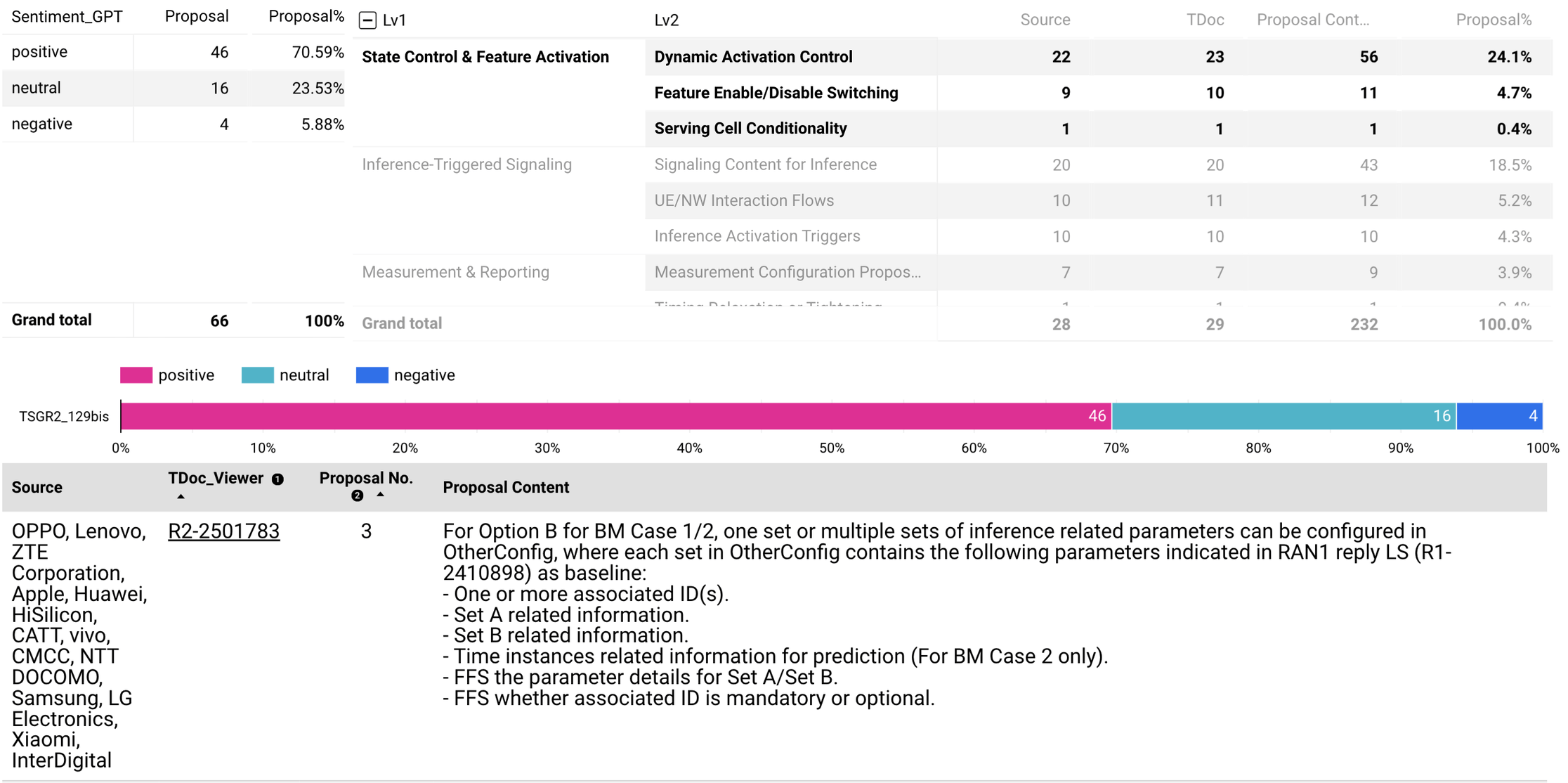
Proposal distribution for Lv1 = (State Control & Feature Activation)
For instance, R2-2501783‘s Proposal 3 (as shown above) introduced parameter sets (e.g., associated IDs, Set A/B information). This category’s prominence signals RAN2’s intent to develop adaptive mechanisms for AI/ML-driven 5G networks.
Execution Semantics and Measurement: Structurally Underrated
While Timing & Execution Semantics (8 proposals) and Measurement & Reporting (10 proposals) accounted for a smaller share, they are foundational for procedural reliability but remain underexplored.
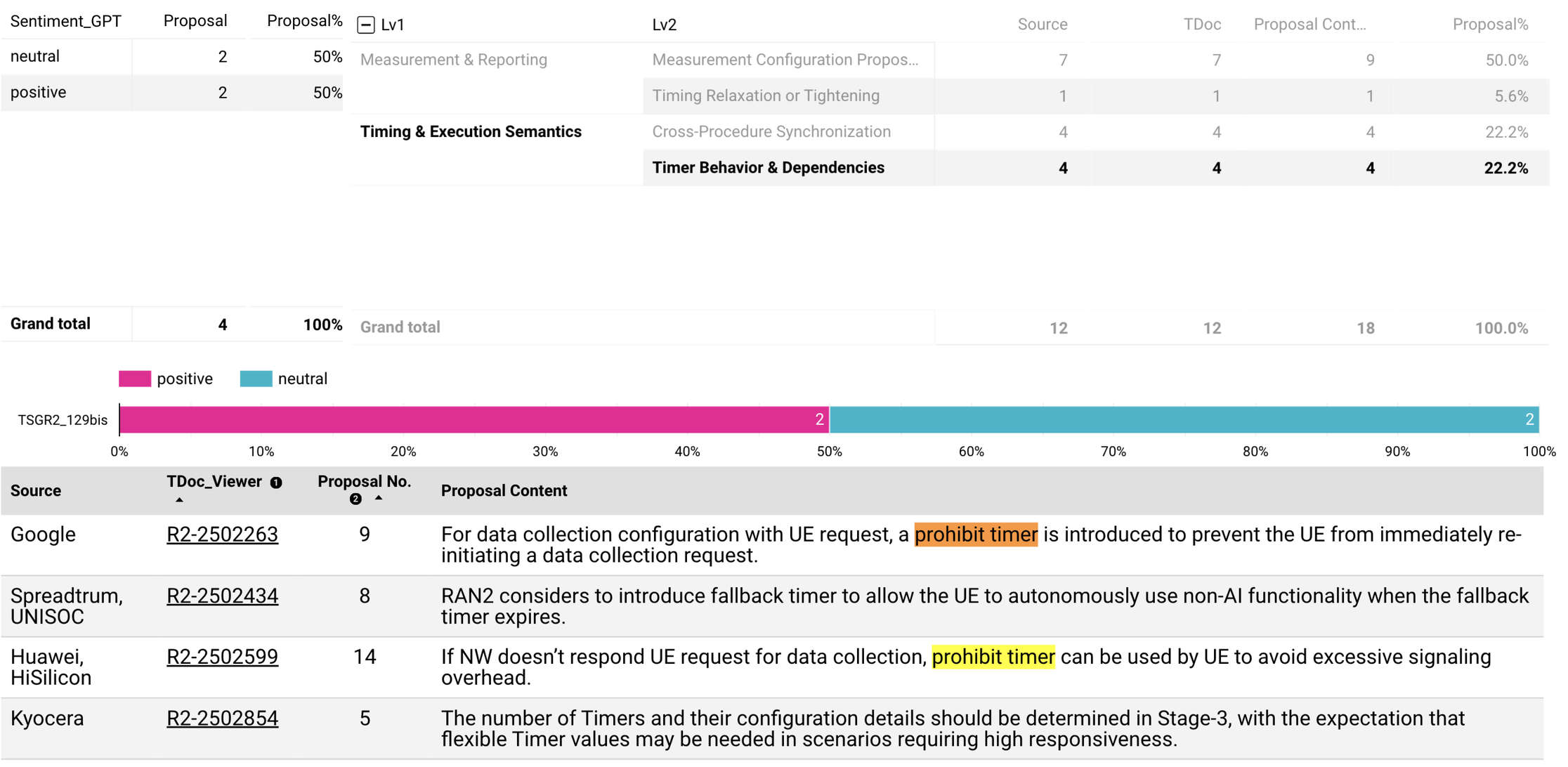
4 proposals relating to Timing & Execution Semantics > Timer Behavior & Dependencies
Only 4 proposals each on Timer Behavior & Dependencies and Cross-Procedure Synchronization suggest a need for more focus on timing-related challenges, such as managing prohibit timers for applicability updates (e.g., Google’s R2-2502263 and Huawei’s R2-2502599).
Preparing for Stage-3: Key Challenges and Recommendations
The technical density of RAN2#129bis sets the tone for the upcoming Stage-3 phase. Focus areas include:

Focus areas for Stage-3
- Unified Inference Triggers (10 proposals): Standardizing triggers (e.g., R2-2501783’s RRC-based triggers) to ensure consistent UE behavior.
- Streamlined Signaling Flows (12 proposals): Defining how UEs and networks interact (e.g., R2-2502599’s UAI container approach) to reduce signaling overhead.
- Dynamic State Synchronization (56 proposals): Developing robust activation/deactivation mechanisms, such as MAC CE-based activation for periodic CSI reporting (R2-2501940).
- RAN1 Dependencies & Coordination: Many proposals (e.g., R2-2501783, R2-2502599) rely on RAN1 inputs for parameter details (e.g., Set A/B definitions, time instances for prediction). RAN2 must coordinate with RAN1 to finalize these specifications.
Final Thoughts
RAN2#129bis confirms that AI/ML in 5G/6G is no longer conceptual — it’s a standards-critical domain. With 232 proposals spanning applicability, signaling, and dynamic control, delegates face the challenge of integrating flexibility, diagnostic clarity, and execution precision.
Wispro Insight: The analysis clarifies RAN2#129bis trends, equipping RAN2 delegates with a strategic lens for standard-setting. As AI/ML scales, this structured analysis is your foundation for impactful contributions.
As Rel-19 unfolds, RAN2 delegates must focus on interoperability, scalability, and cross-layer coordination. The time to shape innovative UE behavior — grounded in sound-signaling design — is now.
Stay informed with Wispro as 5G/6G evolves into a more intelligent, more adaptive network.
To explore the entire dataset, access proposal maps/dashboard, or align your feature development strategy, comment below, message me, or visit https://ixi.wispro.com.
The original article is from https://www.linkedin.com/pulse/insights-from-ran2129bis-aiml-driven-beam-management-advances-lin--bji4c/
